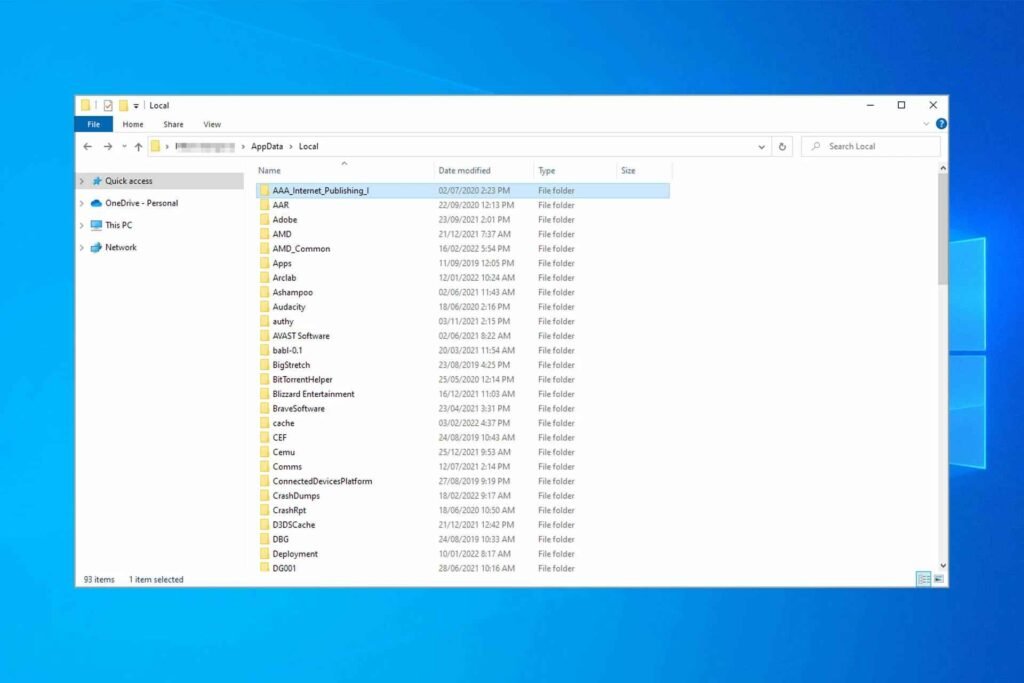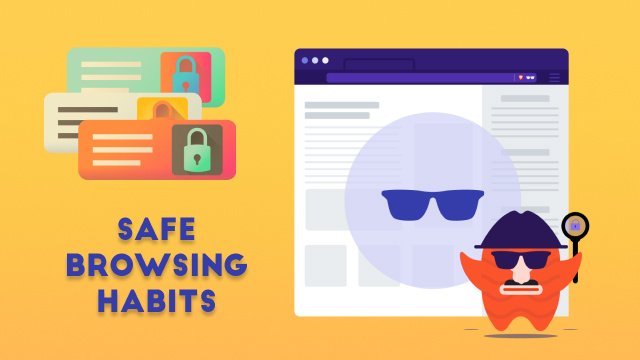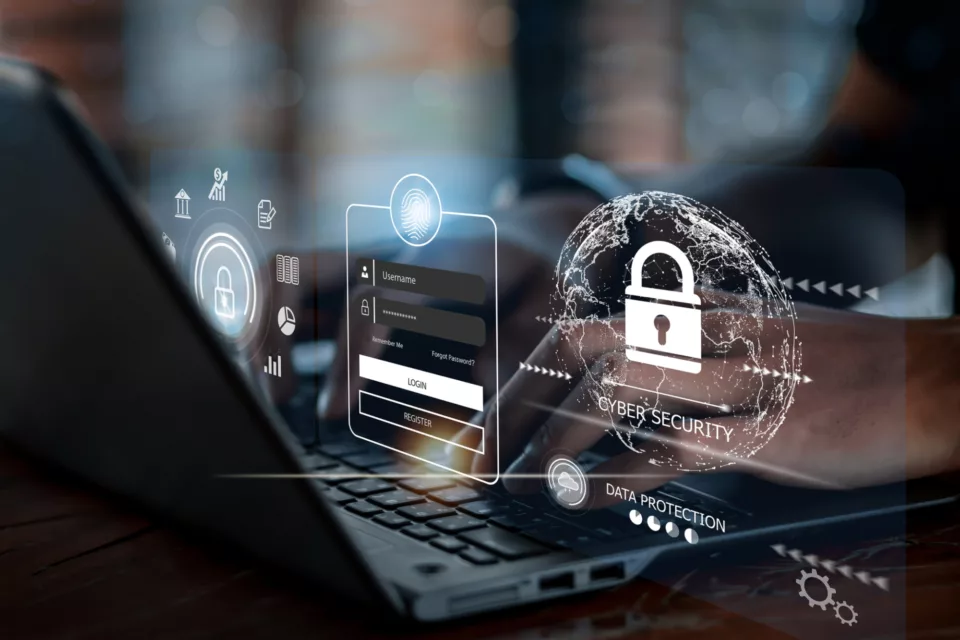With the rapid advancement of technology, the need for strong cybersecurity measures has never been more important. Home computers are prime targets for cybercriminals who want to exploit vulnerabilities for financial gain, identity theft, and more. How can you protect your home computer cyber awareness 2024 is crucial to safeguarding your personal data and maintaining a secure digital environment. This comprehensive guide will provide up-to-date strategies and best practices to protect your home computer from the latest cyber threats.
1. The Evolving Cyber Threat Landscape in 2024
1.1 Understanding Current Threats
Cyber threats have become more sophisticated over the past few years. In 2024, we see a rise in:

Advanced Malware: Malware has evolved to circumvent traditional security measures. New variants can hide in legitimate software, making it harder to detect.
Ransomware-as-a-Service (RaaS): Cybercriminals are now offering ransomware services on the dark web, making it easier for less skilled hackers to launch attacks.
- Phishing attacks: These remain a prevalent threat, and their tactics are becoming more reliable and targeted.
- IoT vulnerabilities: As more smart devices are connected to home networks, these devices become entry points for cyberattacks.
1.2 Impact of cyber attacks on home computers
The consequences of a cyberattack on a home computer can be devastating. This can lead to financial losses, identity theft, and unauthorized access to sensitive information. In addition, infected computers can become part of botnets used for further attacks, inadvertently contributing to cybercrimes on a large scale.
1.3 Need for cyber awareness
Being aware of potential threats and how they can affect you is the first step in answering the question, “how can you protect your home computer cyber awareness 2024?” This awareness helps you recognize risky behaviors and take appropriate action to protect your digital life.
2. Securing Your Home Network: The Foundation of Cybersecurity
2.1 Securing Your Wi-Fi Network
Your Wi-Fi network is the gateway to all your devices. Here’s how you can secure it:
- Change default settings: Update your router’s default username and password to something strong and unique.
- Use strong encryption: WPA3 is the most secure encryption protocol. Make sure your router uses it.
- Hide your SSID: Disabling SSID broadcasting makes your network less visible to potential attackers.
2.2 Implementing Network Segmentation
Network segmentation involves dividing your home network into different segments, such as one for personal use and another for IoT devices. This can limit the spread of malware and protect sensitive information.
2.3 Using a Firewall and VPN
- Firewall: A firewall acts as a barrier between your home network and potential threats. Make sure it’s enabled and updated.
VPN: A virtual private network (VPN) encrypts your internet traffic, making it difficult for cybercriminals to intercept your data, especially when using public Wi-Fi.
3. Keeping your software and system up-to-date
3.1 The importance of regular updates
Software updates often include security patches that address vulnerabilities. Not updating your system leaves it open to attacks. Set your operating system, browser, and all applications to update automatically whenever possible.
3.2 Removing outdated software
Software that is no longer supported by the developer is a security risk. Remove programs from your computer and find modern alternatives that offer ongoing support and security updates.

3.3 Using Automatic Updates
Enable automatic updates for your operating system and critical applications. This ensures that you are protected from known vulnerabilities without having to manually check for updates.
4. Using Security Software: An Essential Defense
4.1 Choosing the Right Antivirus Software
Choose a reputable antivirus program that offers real-time protection, automatic updates, and the ability to scan for a variety of threats. Features such as anti-phishing and anti-ransomware are also valuable additions.
4.2 Using Anti-Malware and Anti-Spyware Tools
In addition to antivirus software, use dedicated anti-malware and anti-spyware tools. These provide additional layers of protection against threats that antivirus software may not catch.
4.3 Taking Advantage of a Firewall
Your computer’s built-in firewall, combined with a hardware firewall on your router, can provide strong protection against unauthorized access and network-based attacks.
5. Enforcing Strong Password Policies
5.1 Creating Strong Passwords
Use passwords that are at least 12 characters long and include a mix of letters, numbers, and symbols. Avoid using easily guessable information such as names, birthdays or common phrases.
5.2 Using a password manager
A password manager can store and generate strong, unique passwords for all your accounts. This eliminates the need to remember complex passwords and reduces the risk of password reuse.
5.3 Enabling two-factor authentication (2FA)
Two-factor authentication adds an extra layer of security by requiring another form of verification besides your password. This can be a text message, email or an authenticator app.
6. Protecting personal information
6.1 Encrypting sensitive data
Use encryption tools to protect sensitive files on your computer. This ensures that even if your computer is compromised, your data will remain secure.
6.2 Backing up data regularly
Regular backups protect your data from loss due to ransomware, hardware failure or accidental deletion. Use both local (external drives) and cloud-based solutions for redundancy.
6.3 Destroying digital files
When deleting sensitive files, use a digital file shredding tool to ensure they are permanently deleted and cannot be recovered.
7. Safe online practices
7.1 Recognizing phishing scams
Phishing scams are designed to trick you into providing personal information. Look out for:
- Unsolicited emails or messages asking for personal information.
- Suspicious links and attachments.
- Poor spelling and grammar, which can be a red flag for phishing attempts.
7.2 Safe browsing habits
- Use browsers that offer built-in protection against phishing and malicious websites.
- Consider using browser extensions that block ads and trackers, which can sometimes be used to distribute malware.

7.3 Caution with downloads
Only download files from reputable sources. Malicious software can be hidden in legitimate downloads.
8. Securing smart home devices
8.1 Changing default credentials
Most smart devices come with a default username and password. Change these as soon as you set up the device to prevent unauthorized access.
8.2 Regular firmware updates
Smart devices often contain vulnerabilities that can be exploited if they are not patched. Check for firmware updates regularly and apply them.
8.3 Isolating IoT devices
Consider creating a separate network for your IoT devices. This prevents a compromised device from affecting other devices on your main network.
9. Educating family members
9.1 Teach basic cyber hygiene
Educate all members of your household about safe online practices, such as recognizing phishing scams, using strong passwords, and being cautious with downloads.
9.2 Setting up user accounts
Create separate user accounts for each family member with appropriate privileges. This limits the damage caused by malware infections.
9.3 Parental Controls
Use parental controls to restrict access to inappropriate content and limit the ability to download and install new software without your permission.
10. Preparing for cyber incidents
10.1 Creating a response plan
Have a plan ready for what to do in the event of a cyber incident. This may include disconnecting from the internet, running an antivirus scan, and restoring from a backup.
10.2 Testing your plan
Test your response plan regularly to ensure it is effective. Conducting mock scenarios can help identify any gaps in your strategy.
10.3 Knowing when to seek help
If you encounter a cyber threat that you cannot handle, seek professional help. Many cybersecurity experts offer services to help you recover or prevent future attacks.
11. Keeping your personal and financial information safe
11.1 Monitoring financial statements
Regularly check your bank and credit card statements for any unauthorized transactions. Report any suspicious activity immediately.
11.2 Using identity theft protection services
Consider using a service that monitors your personal information and alerts you to any unusual activity. These services can help you detect identity theft early.
11.3 Destroying sensitive documents
For documents containing personal information, use a shredder before destroying them. This prevents identity thieves from accessing your information.
12. Staying informed about cybersecurity
12.1 Following reputable cybersecurity sources
Stay up to date on the latest threats and best practices by following reputable cybersecurity blogs, news outlets, and experts.
12.2 Joining cybersecurity communities
Join online communities focused on cybersecurity. This can provide valuable insight and advice from people who are equally invested in protecting their digital lives.
12.3 Attending workshops and webinars
Look for educational opportunities like workshops and webinars. These can provide practical experience and the latest information on protecting your home computer.
13. Protecting against ransomware attacks
13.1 Regular backups
Regularly back up your important files to an external drive or cloud service. This ensures that you can restore your data in the event of a ransomware attack.
13.2 Avoiding suspicious links and attachments
Most ransomware infections begin with malicious links or attachments. Be wary of emails and messages, especially from unknown sources.
13.3 Using anti-ransomware tools
Many security suites now include anti-ransomware tools that provide additional protection against these threats. Consider using these as part of your cybersecurity strategy.
14. Managing your digital footprint
14.1 Limiting the information you share online
Be careful about the personal information you share online. Avoid posting sensitive information that could be used to impersonate you or answer security questions.
14.2 Reviewing privacy settings
Regularly review the privacy settings on your social media accounts to control who can see your posts and personal information.
14.3 Being cautious of third-party apps
Be cautious of third-party applications that request access to your social media accounts. These can sometimes collect more information than necessary.
15. Secure communication practices
15.1 Using encrypted messaging apps
Use apps that provide end-to-end encryption for secure communications. This ensures that only you and the intended recipient can read messages.
15.2 Securing your email account
Use strong, unique passwords for your email accounts and enable two-factor authentication. Consider using a secure email service that offers enhanced privacy features.
15.3 VPN for secure browsing
A VPN not only protects your internet traffic, but also provides an additional layer of security for your online communications. Use a VPN whenever possible, especially when accessing sensitive information.
16. Handling spam and junk email
16.1 Recognizing spam
Spam emails often contain offers that are too good to be true or ask for personal information. Be cautious and avoid clicking on links or downloading attachments from unknown sources.
16.2 Using email filters
Most email services provide spam filters that can automatically detect suspicious emails and move them to the spam folder. Configure these filters to suit your needs.
16.3 Reporting phishing emails
If you receive a phishing email, report it to your email provider. This helps them improve their spam filters and protect other users from similar attacks.
17. Managing social media privacy
17.1 Adjusting privacy settings
Review and adjust the privacy settings on your social media accounts to control who can see your information. Limit the visibility of your posts and personal details to only trusted individuals.
17.2 Avoid oversharing
Be careful about the information you share on social media. Avoid posting information such as your home address, phone number or travel plans, which could be used by cybercriminals.
17.3 Being cautious with friend requests
Only accept friend requests from people you know and trust. Cybercriminals often use fake profiles to gather personal information or spread malware.
FAQ section
Q1. What is the most important step to protect my home computer?
There is no single step that guarantees complete security. A combination of strong passwords, updated software, reliable security tools, and safe online practices is the best approach.
Q2. How often should I update my antivirus software?
Set your antivirus software to update automatically. This ensures that you are always protected against the latest threats.
Q3. Can I use the same password for multiple accounts?
It is strongly recommended to use unique passwords for each account. If one of your accounts is compromised, using the same password increases the risk.
Q4. Is it safe to use public Wi-Fi with my home computer?
Public Wi-Fi networks are often unsecured. If you must use public Wi-Fi, always connect via VPN to protect your data.
Q5. What should I do if I suspect my computer has been hacked?
Disconnect from the Internet, run a full system scan with your antivirus software, and change your passwords. If the problem persists, seek professional help.
Conclusion
Staying ahead of cyber threats in 2024 requires a proactive approach. By following the strategies outlined in this guide, you can answer the question how can you protect your home computer cyber awareness 2024 effectively. Keep your software updated, use strong passwords, and stay informed about the latest threats. With these steps, you can significantly reduce the risk of cyber attacks and maintain a secure digital environment for yourself and your family.
For more technology updates, check out MyTechAngle, your reliable resource for the latest in tech.



